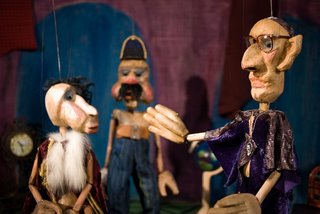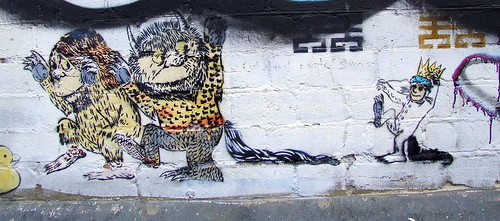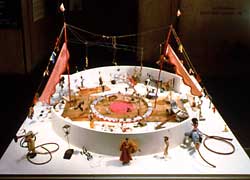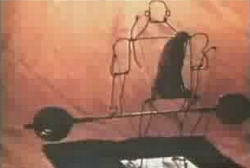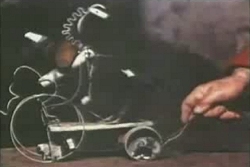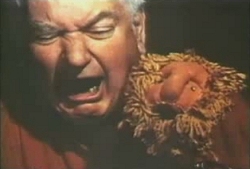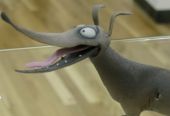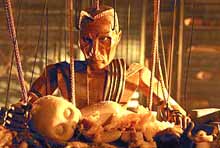
I found the film Strings, which I saw at the Puppetry Summit, very curious. You can see a trailer here, a stills gallery here, and an article about the puppetry and the making of the movie here. I was intrigued by numerous aspects about the film and the puppetry, but I didn’t enjoy it as a whole, and it didn’t move me on an emotional level at all.
In the world conjured up in Strings, everyone has strings like a marionette, that reach up to heaven. Where there are relationships between people, like family, lovers, even slaves and slave owner, there is some magical connection via their strings in heaven. A person’s head string is their life line, and if it is severed they die. People are made of wood. Babies are carved out of wood and are inanimate until the time comes to be born. During the birth, the mother is in some kind of connection of concentration with the baby. Very fine threads appear from heaven, and a birth helper catches hold of them and places them in the prepared holes, where they magically connect. As the head string connects, the baby becomes alive, opening its eyes for the first time. An injury like a hand string being severed means that body part dies, but a replacement part can be got from someone else in an operation – at that person’s cost. If a person dies naturally, their strings come
tumbling down from heaven.
The puppets have strongly carved faces suggestive of their characters. Eyes open and close, but there is no other facial movement. You get used to the lips not moving very quickly. I liked the way age is suggested by the wood aging: some characters are very weathered, with deep cracks in the grain of their faces, and the oracles seem to be almost rotting away.
The images of multitudes of strings disappearing into the heavens are conceptually interesting, as is the way the people are kept prisoner by a grid in the prison roof that keeps an individual’s strings in check, and the kids play ‘tangle’. But then it didn’t make sense how people managed moving through gateways and doors!
Strings seemed to me to be essentially a film asking for peace: two warring cultures reunited after realizing they should get along and the young ones falling in love, and although but I didn’t find the story itself engaging, the symbolism was interesting. My strong impression was that a lot of the imagery derived from the Iraq war – toppling the statue of the tyrant, beheadings, torture, the quest for liberation, and a masked enemy. Later I found this was confirmed in interviews with the director, Anders Rønnow Klarlund, in a press kit. (Check the newspaper article from The Times in particular). Another noticeable thing was how water was always used in death scenes – rain, puddles, floating the bodies away on rafts, and the battle dead were in water or snow. At the end, when the princess dies, the little dinosaur bird that was her familiar, has the courage to fly for the first time, and it is without strings. It flies off her burial raft and is free.
(My attendance at the puppetry summit was supported by the ACT Government)
Links updated 2015
